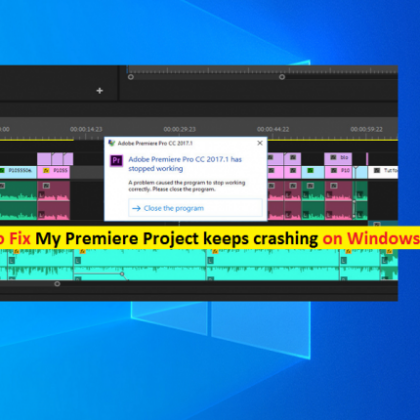Introduction
Imagine a scenario: You’ve just finished a crucial report that took hours of meticulous work, and you’re about to save it on your Windows 10 computer. But instead of a smooth save, you’re greeted with a daunting error message: “File or Directory is Corrupted and Unreadable.” Panic sets in as you realize you might lose all your hard work. This is where a comprehensive guide to resolving this issue can be a lifesaver. In this article, we will delve into the potential reasons behind this error, common error codes, and, most importantly, the various methods to fix it, both automatically and manually.
Possible Reasons for the “File or Directory is Corrupted and Unreadable” Error
Before diving into solutions, it’s essential to understand what might be causing this issue:
- Disk Errors: Physical or logical disk errors can lead to corruption. This includes bad sectors on your hard drive, which can render files inaccessible.
- Malware or Virus Infections: Malicious software can corrupt files and directories, making them unreadable.
- Improper Shutdowns: Abrupt power outages or forceful system shutdowns can interrupt file operations and result in corruption.
- Faulty Hardware: A malfunctioning hard drive, RAM, or other hardware components can cause corruption issues.
- Software Conflicts: Incompatible or poorly coded software can interfere with file operations and lead to corruption.
- File System Issues: Problems with the NTFS file system, which Windows uses, can cause this error.
Common Error Codes with Examples
When you encounter the “File or Directory is Corrupted and Unreadable” error, you may see specific error codes. Here are some common ones with examples:
- Error Code 0x80070570: This error indicates a file or directory corruption issue during installation or file transfer. For instance, when copying files from a DVD to your computer.
- Error Code 0xc000007b: This error often occurs with application launch failures, indicating that a critical system file is corrupted.
- Error Code 0x80070570: When attempting to install a program or update, this error can appear due to corrupted system files.
Now that we’ve covered the potential causes and common error codes let’s explore the methods to fix the “File or Directory is Corrupted and Unreadable” error in Windows 10.
Methods to Fix the Error
- Automatic Repair:
- Windows includes a built-in Automatic Repair tool. To use it, boot your computer from a Windows installation disk or USB drive and select the “Repair your computer” option. Follow the on-screen prompts to run Automatic Repair, which attempts to fix common system errors.
- Check Disk Utility:
- Use the built-in CHKDSK (Check Disk) utility to scan and repair disk errors. Open Command Prompt as an administrator and run the command “chkdsk /f /r.” This will scan and fix disk issues, including bad sectors.
- SFC (System File Checker):
- Run the “sfc /scannow” command in Command Prompt with admin privileges. This utility checks and repairs corrupted system files.
- Recover from Backup:
- If you have a backup of the corrupted files or directories, restore them from your backup source.
- Third-Party Data Recovery Software:
- Consider using reputable data recovery software like Recuva or Stellar Data Recovery to recover inaccessible files.
Conclusion
Encountering the “File or Directory is Corrupted and Unreadable” error in Windows 10 can be a frustrating experience, but it’s not the end of the road. By understanding the potential causes, recognizing common error codes, and following the steps outlined in this guide, you can often recover your files and restore your system to normal operation.
FAQ
- Is it safe to use third-party data recovery software?
- Yes, reputable data recovery software is generally safe to use. However, be cautious and choose well-known software to avoid potential risks.
- Can I prevent this error from happening in the future?
- Yes, you can reduce the risk by regularly backing up your important files, keeping your system updated, and using reliable antivirus software to prevent malware infections.
- What if none of the methods work?
- If none of the methods in this guide work, it’s possible that your hardware, such as the hard drive, is failing. In such cases, consult a professional for further diagnosis and assistance.


